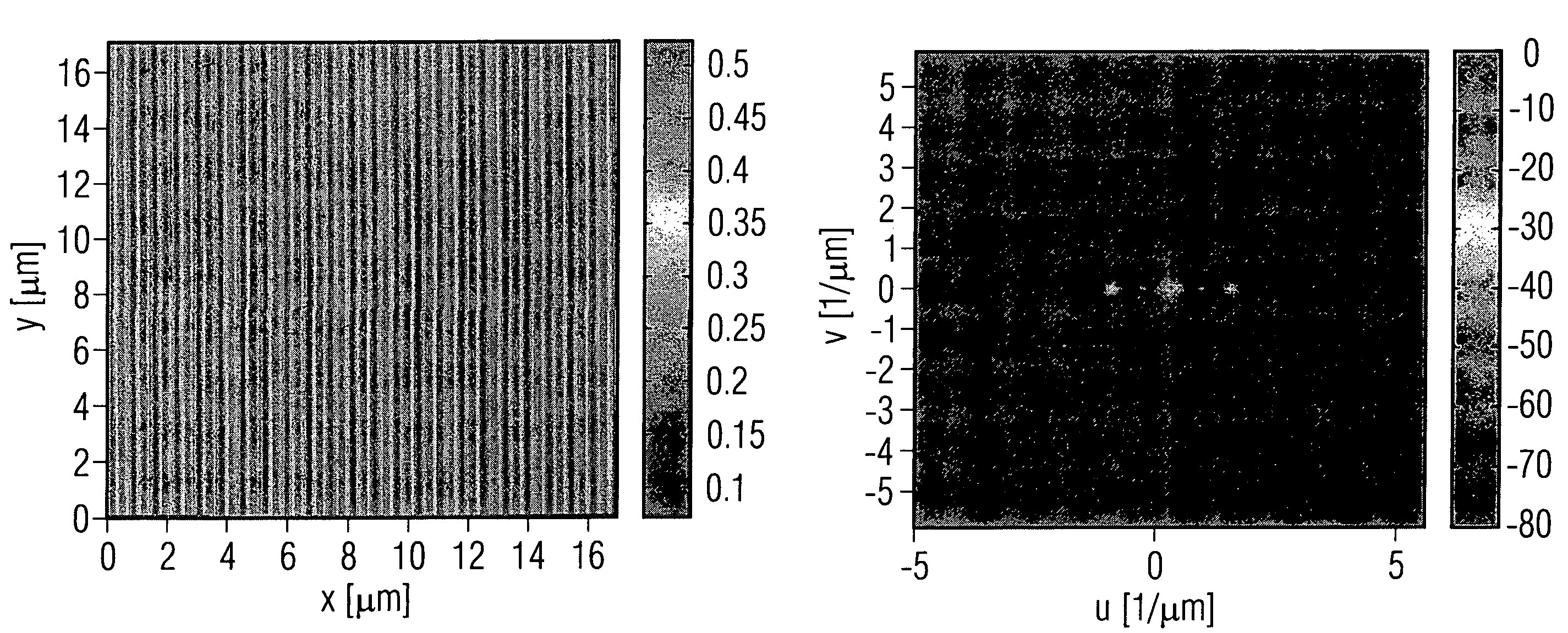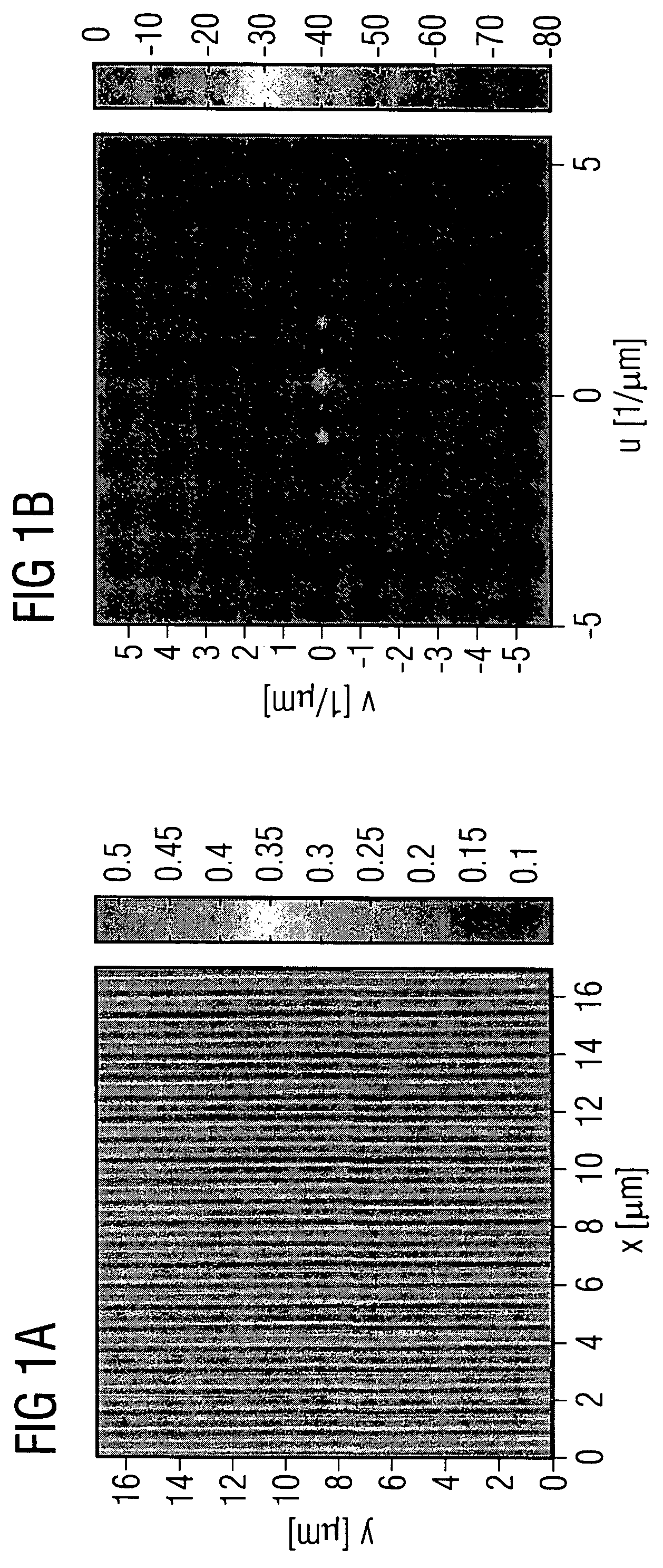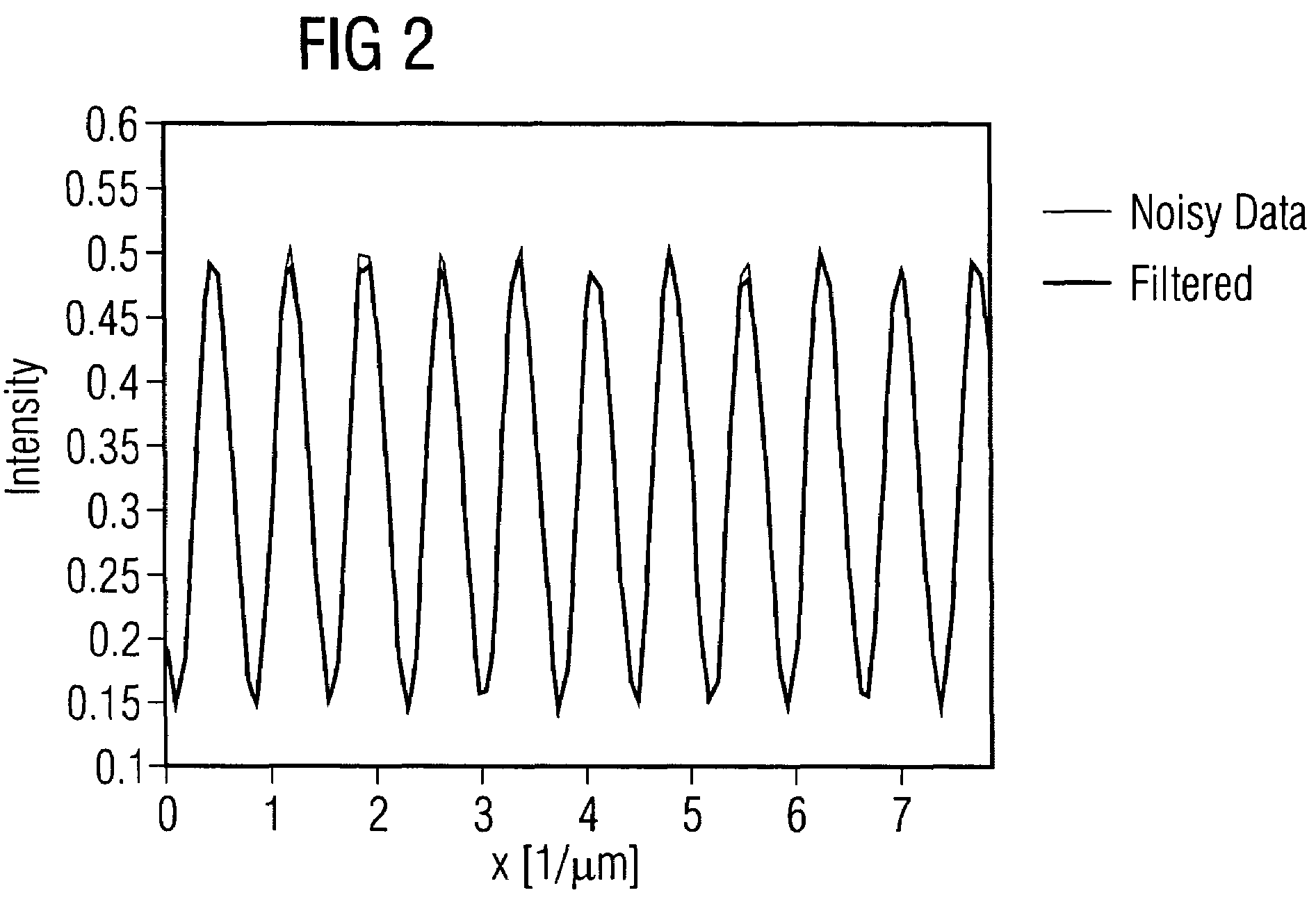Method for inspection of periodic grating structures on lithography masks
a lithography mask and periodic grating technology, applied in the field of masks, can solve the problems of systematic manufacturing faults, unsatisfactory brightness errors, and local properties defects of lithography masks, and achieve the effects of convenient compensation, less stringent requirements, and improved sensitivity
- Summary
- Abstract
- Description
- Claims
- Application Information
AI Technical Summary
Benefits of technology
Problems solved by technology
Method used
Image
Examples
Embodiment Construction
[0044]The making and using of the presently preferred embodiments are discussed in detail below. It should be appreciated, however, that the present invention provides many applicable inventive concepts that can be embodied in a wide variety of specific contexts. The specific embodiments discussed are merely illustrative of specific ways to make and use the invention, and do not limit the scope of the invention.
[0045]Various embodiments of the present invention will now be described. After a written description, specific examples will be described with respect to the Figures.
[0046]In a first aspect, the present invention provides for the calibration of a first image of each array structure for selected locations on the lithography mask, calculation of the Fourier coefficients at a reference point of an array / diffraction grating, calculation of a residual image from a difference between an original image of the array structure and Fourier expansion, and formation of a threshold value...
PUM
 Login to View More
Login to View More Abstract
Description
Claims
Application Information
 Login to View More
Login to View More - R&D
- Intellectual Property
- Life Sciences
- Materials
- Tech Scout
- Unparalleled Data Quality
- Higher Quality Content
- 60% Fewer Hallucinations
Browse by: Latest US Patents, China's latest patents, Technical Efficacy Thesaurus, Application Domain, Technology Topic, Popular Technical Reports.
© 2025 PatSnap. All rights reserved.Legal|Privacy policy|Modern Slavery Act Transparency Statement|Sitemap|About US| Contact US: help@patsnap.com



